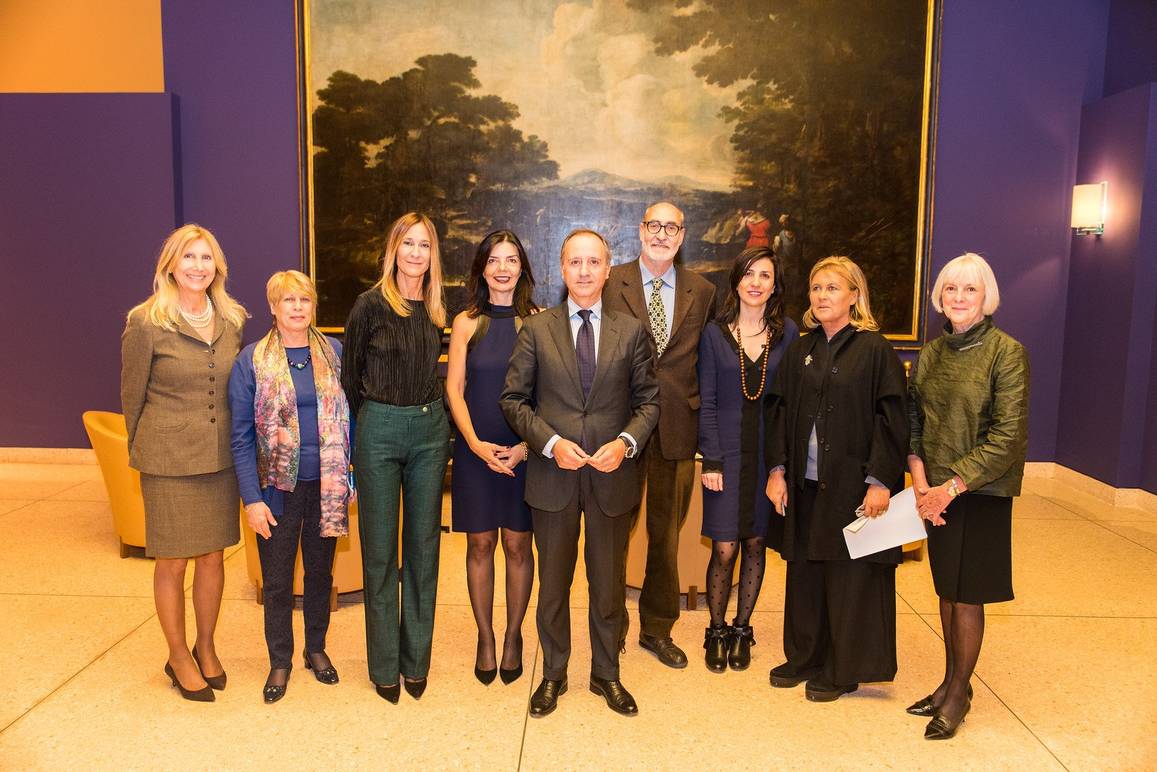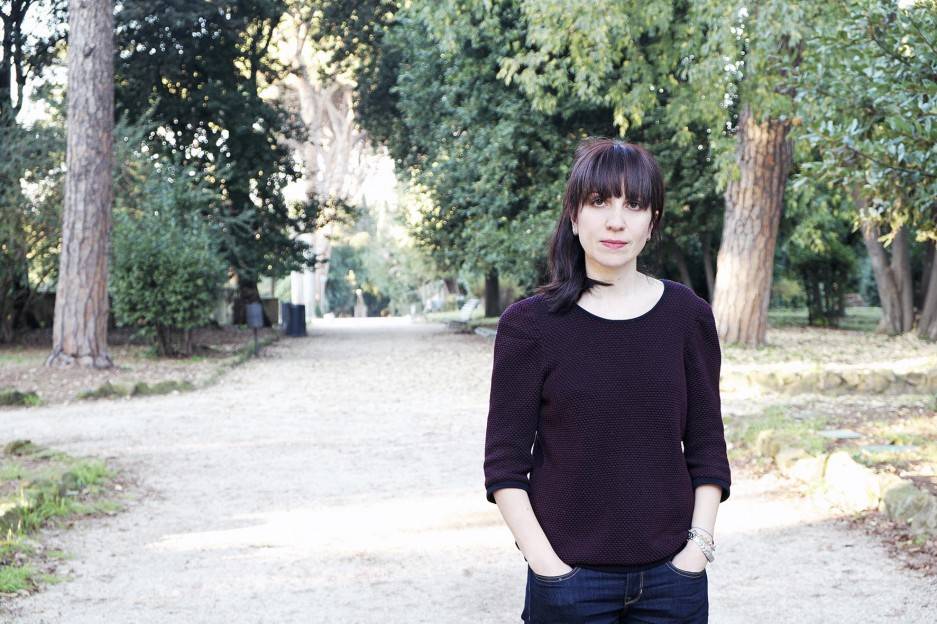The Bridge Book Award in its Second Edition
On Wednesday evening, the Italian Institute of Culture (IIC) in New York honored accomplished authors, Nadia Terranova, Gli Anni al Contrario, and Marco Belpoliti, Primo Levi di Fronte e di Profilo, for their literary contributions as the Italian winners of the book award called “The Bridge.”
In its second edition, the accolade is conferred annually to a work of fiction and nonfiction in both Italy and America. Judges from said countries, selected among professors, literary critics, journalists, writers, and translators, carefully decide on four recently published works in an effort to “bridge” two cultures through literature. Created by Casa delle Letterature of the Rome Municipality, the Embassy of the United States in Rome, and the American Initiative for Italian Culture, the idea is to promote awareness and exchange of the most recent cultural trends. The event’s moderator, Maria Ida Gaeta, Director of Casa delle Letterature, explained the initiative as “an example of cultural diplomacy based on literature.”
On October 24, at the Italian Embassy in Washington, D.C., the Italian recipients were bestowed a sum to cover the cost of translation and travel expenses, as well as promised assistance in finding a publisher for each of their books in the US. The American winners—Eli Gottlieb, Best Boy, and Margo Jefferson, Negroland. A Memoir—will be presented their awards at the American Embassy in Rome on November 16.
Last night at the IIC, Director Giorgio Van Straten, welcomed Stefano Albertini, Director of Casa Italiana Zerilli-Marimò, to host a conversation with Terranova, examining her characters and their correlation to the ancient Sicilian legend of Colapesce. After their discussion, Belpoliti took the stage with Anna Foa, author and professor at the University of Rome, shifting the attention from fiction to nonfiction.
Gli Anni al Contrario is Terranova’s first novel and has been translated into five languages, winning the prestigious Premio Bagutta. While she made her debut in children’s literature and went on to publish five books for kids, Terranova told Albertini, “I’ve always written for both adults and children. I don’t differentiate between adult and young adult books.”
The story is based in Terranova’s hometown of Messina, Sicily, from 1977—1989, a time plagued by political terrorism. A captivating tale of love, Albertini described it as beautiful, complicated, difficult, and honest. The female protagonist, Aurora desperately wants to emancipate from her oppressive fascist family and dives into her studies. The male protagonist, daredevil John grows increasingly angry at his father’s communism and is eager to start a revolution. The two meet in college and later give birth to a little girl they name Mara.
Albertini explained John as “a dramatic antihero” and “a victim of his years and of the ideologies that betrayed his trust, illusions, and hope of the future.” When the possibility of revolution fades away, he becomes fascinated with drugs, trapped once more from the troubles of the times. Through it all, Aurora never gives up on him or herself, only interested in making a better life for their daughter. Albertini blames history’s betrayal for their struggle to maintain their passionate bond, noting, “History does not justify the story, but rather helps us to understand.”
Albertini clarified the many ways in which the characters are marginalized. Of course, they both suffer from the widespread social conflict, but also from a lack of attention from their families. Furthermore, their daughter is considered a mistake out of passionate love.
He told the audience, “There is no hierarchy between the protagonists.” He believes there is a great balance in the dialect, with critics praising the novel for flowing like a song. “It is a generous novel because there’s a lot that happens and a lot of turning points. That’s what makes it so great to hear,” Albertini conveyed.
Following his thorough account on John and Aurora, Albertini asked Terranova how she incorporated the Colapesce legend that dates back to the twelfth century into her novel.
Terranova prefaced, “The story is connected to Messina but dear to all of Sicily because the idea is that Colapesce supports the whole island.” She continued, “The version I describe in my book is the one my grandma told me.”
The legend says that Cola, short for Nicola, loved to swim, but did not listen to his mom who tried to call him out of the water, eventually developing a tail. His fame came when the king of Sicily decided to test him by throwing a ring into the sea to retrieve. On that occasion, he realized that Sicily rested on three columns, one in good condition, one unsteady, and one collapsed. He resurfaced and warned the king of danger, but the king did not care. Therefore, Cola chose to return underwater and replaced the broken column with his own body to prevent the island from sinking.
Terranova then compared the columns and Cola to her characters. Aurora has problems and is shaky but is fundamentally healthy. John is damaged from the start and more so as the story unfolds. Then there is Mara, who is little but offers her support in spite of the fact that the story ended. “The great part is that the child supports them and keeps them standing, like Colapesce who keeps the city standing without the king caring. She finds solace in the story. This is what happens to all of us, we relate to fairytales.”
“It’s a fairytale, so it connects to your past of writing children’s books," Albertini concluded.
Belpoliti, writer and essayist, teaches at the University of Bergamo and collaborates with various newspapers and magazines, co-editing the series “Riga” (Marcos y Marcos) and the online magazine Doppiozero.
He dedicated a great portion of his career to Primo Levi, best known as an Italian Jewish survivor of the Auschwitz concentration camp, who wrote lucid testimony about wartime. In addition to publishing essays, poetry, commentary, and fiction, Levi was also a chemist.
Belpoliti has come to be one of the leading scholars on Levi, curating the Einaudi edition of his complete works in 1997. His most recent book, Primo Levi Di Fronte e Di Profilo, is the summation of his two decades of research on the writer.
The book describes the “universe” of Primo Levi: his troubled life, his story as writer and as an intellectual, and his multifaceted works, featuring complex topics, such as Judaism, the Holocaust, and the concentration camps. The book also contains ten impressive pictures, which Belpoliti found copyright free without the help of his publisher, and exclusive epistolary material from never-before-explored archives that he also found.
Prompted by Foa, Belpoliti began to explain why he did not begin his work on Levi until later on.
“At first, he did not seem like an important author. At the time, others took the forefront,” he confessed. “In the 70s, Levi was considered an author of anti-fascism. It was a time of the Red Brigades but also of Neo-fascism. It was only a long time after did literary criticism hold him in wide regard. His first positive review was in 1982.”
Foa then told Belpoliti that it was not easy as a witness to read Levi’s description of his experience in Auschwitz. She asked why Levi too felt difficulties on his side, as an author and a witness.
He responded, “Levi was considered a witness, but he could do that because he was a great writer, but that was not clear from the beginning.” He added, “People read literature and politics differently. His ideological approach was not originally understood.”
He went on to reference a critic, “who sums up in one sentence what we should remember.” Belpoliti said that the reason we should believe Primo Levi is because he was a great writer. “This approach changed everything. This is how we should interpret Levi,” he explained. “His writing shed light to Levi as a witness. And this is when perception radically shifted.”
Belpoliti continued to explain all of Levi’s many facets and how this added to literary critics' difficult time with understanding him.
“The important thing is that he is such a multifaceted being and you can never see all of the facets at the same time. Yes, he was a witness and a writer, but what type of writer? He was a chemist, a linguist…he was curious about everything.” He went on, “Literary criticism didn’t understand his many facets. They were underestimated and undervalued at the time.”
Deviating away from Levi and onto the complexity of the book itself, Belpoliti elucidated his unusual approach to his most recent work. Throughout, he moves deep into contents, imagery, and subjects, creating also short paragraphs, which can be read individually as digressions or as part of a unitary context.
“This book is structured as if there were strips that go through it. One is chronological, where I look at how he wrote his book and approached his writing, in terms of editing and structuring, changing around characters and sentences with the technique of a chemist working with molecules, assembling and dissembling,” Belpoliti explained. “The second strip is written like an encyclopedia.”
He progressed, “It is set up in different chapters and some have titles that make it sound like it’s from the 18th century. This book is the result of 20 years of work and I assembled it this way to be full of movement, graphically too.”
Foa told Belpoliti, "I think you are a chemist in this work," and then asked him to read a page to the crowd.
Before reading an excerpt, he concluded, “Levi was a man with such intellectual honesty unparalleled in literature and philosophy. What made him so incredible was his ability to tell his stories and those of others. To quote someone else, ‘He has the genius of the common man.’”
After last night’s discussions, it became evident why these specific works were voted as the winners of “The Bridge.” Gli Anni al Contrario offers further understanding into Italy’s recent pass, describing the violence that inflicted its people and their determined fight to resist and survive. While Primo Levi di Fronte e di Profilo provides greater insight into Levi’s life through his unforgettable and complex works, and it would be a gift to have all of this information gathered together and published in English.








































i-Italy
Facebook
Google+
This work may not be reproduced, in whole or in part, without prior written permission.
Questo lavoro non può essere riprodotto, in tutto o in parte, senza permesso scritto.